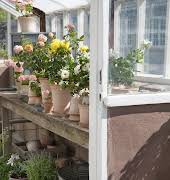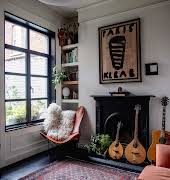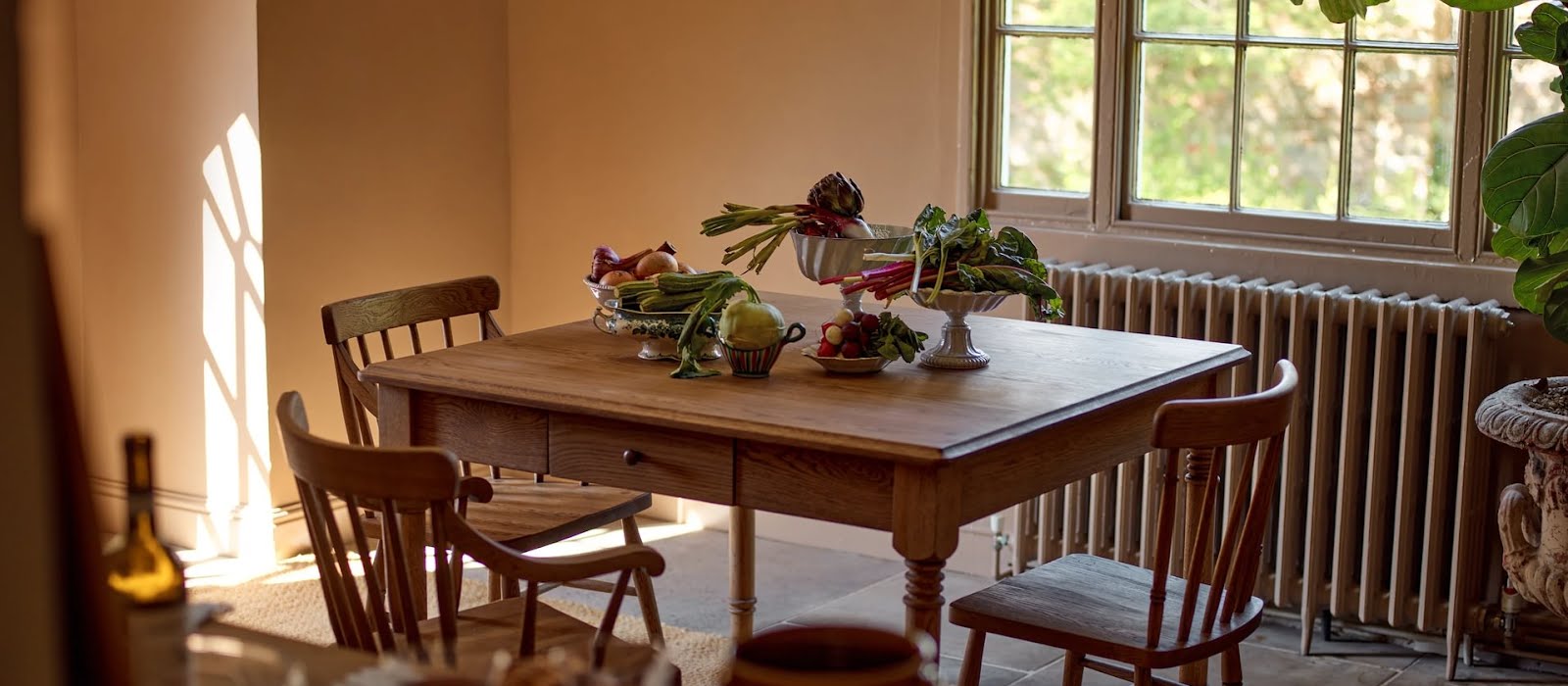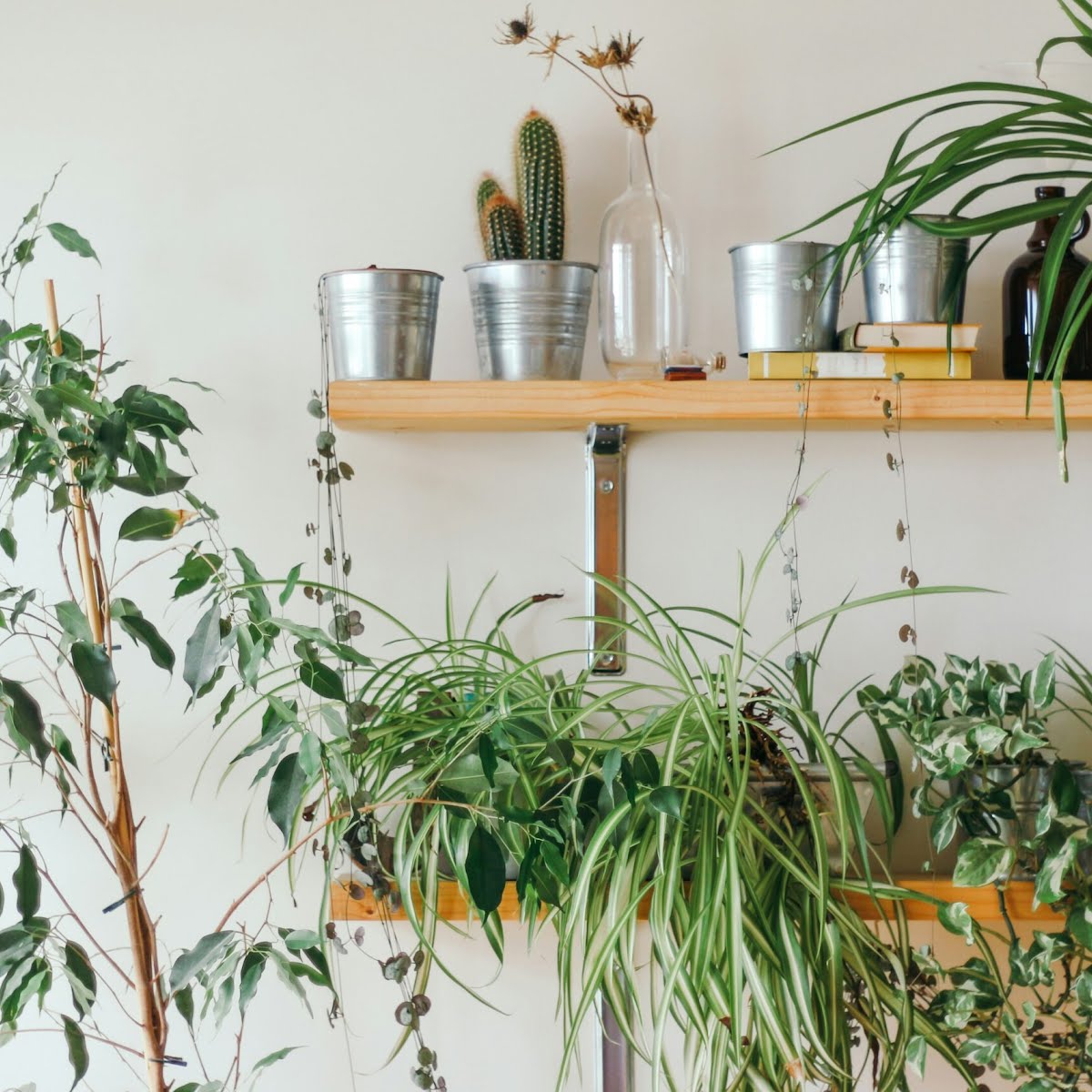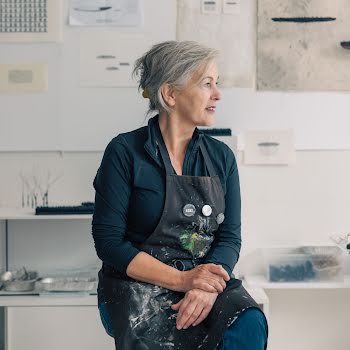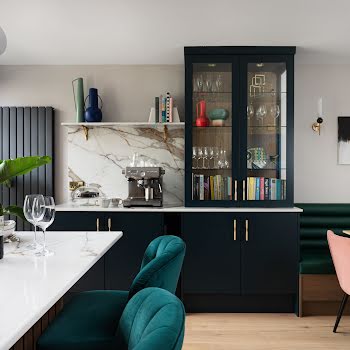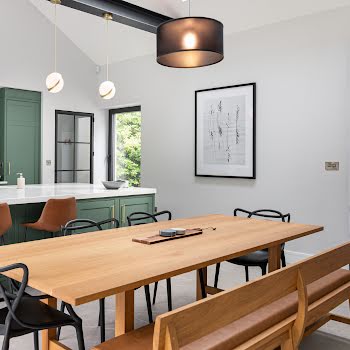Biophilic kitchens: 8 steps to embracing nature indoors
Especially at this time of year when it can feel harder to get outside and enjoy nature, there are such benefits to bringing elements of it into your home.
Biophilic kitchens are far more than a fleeting trend. It’s been found that these nature-inspired interiors can positively impact homeowner health and wellbeing, with benefits including stress relief, reduced fatigue, and an increase in positive emotions. Why wouldn’t you want to join the hype?
If you’re interested in biophilic design and how to incorporate it into your kitchen, take a look at these 8 steps to get started.
Maximise Natural Light
Allowing light to flow across your kitchen is a brilliant way to create a space that’s connected to the outdoors. It’s well known that natural light improves mood and helps keep seasonal affective disorder (SAD) at bay. It also regulates your circadian rhythm, leading to better, more regular sleep.
An easy way to maximise natural light in your space is to simply add more windows. Consider floor-to-ceiling glass and skylights, for example. You can also allow light to move through your home by creating an open-plan living space, reducing the number of walls that block the sun as it moves around your home. A quick fix if you don’t have the budget for a project is to use mirrors to reflect natural light into corners where it doesn’t reach.
Play with shadows and dappled light, too, and mimic the look of sunlight falling through trees. Add a sun-loving plant in front of your window or use window shutters to give you more control over the look of natural light in your space.
Take a peek at this gorgeous home in Howth for more inspiration.
Choose Natural Worktops and Floors
Biophilic kitchens are rooted in the use of natural materials. This also gives your interiors a sustainable boost, reducing the amount of plastic or other man-made resources in your space.
As a great foundation, start by choosing natural worktops and flooring. These provide a biophilic canvas for your space, grounding you in natural materials for an aesthetic that’s closer to nature.

Timber is an excellent option for both worktops and floors. Opt for a naturally durable species, like oak, which doesn’t need to be chemically treated before use. Maintain the appearance of your wood with natural oils and stains.
You can also use stone flooring, such as slate or limestone. For your worktops, some biophilic favourites include marble, granite, and quartzite.
Create an Indoor Herb Garden
Spaces inspired by nature often use greenery to create a biophilic aesthetic and bring the outdoor world inside. While this is a great choice (take a peek inside Mark Grehan’s Dublin penthouse for all of your plant inspiration!) you might be looking for something a little different in your kitchen.

One option is to create an indoor herb garden. By adding pots of basil, parsley, and chives (to name just a few) to your kitchen, you create a useful resource of fresh herbs while also giving your interior a welcome burst of natural greenery.
Add your herbs to your window sill, a wooden shelf, or in larger, ceramic pots that sit on your floor. You can also dry your fresh herbs and hang them from hooks, making the most of what you’ve grown throughout the year.
Work With Earthy Tones
An earthy colour palette makes it simpler to embrace nature in every corner of your kitchen. Think warm browns, soft greens, muted tans, and rich terracottas that echo natural landscapes. A deep autumnal red or dusty orange won’t go amiss, either.
Use these tones to accessorise alongside your natural materials. Consider glass vases, wooden bowls, and natural wicker mats that incorporate earthy shades, adding a colourful lift to your biophilic backdrop.
You can also add wall art that incorporates earthy colours or depicts natural scenes, amplifying your use of the great outdoors in your interiors.
You Can Never Go Wrong With Wood
We’ve discussed using wood for your flooring and worktops, but there are plenty of other chances to incorporate this versatile material into your kitchen. As a renewable, biodegradable, and cost-effective choice, it’s hard to go wrong with timber accessories.

Some great ideas to add more wood to your kitchen include using wooden utensils and displaying them in a storage jar or vase, and choosing wooden chopping boards and serving boards. Another idea is to store your food in glass jars with bamboo lids, or add faux timber beams to your space
For an additional sustainable boost, look into sourcing your furnishings second-hand and breathe new life into old wood.
Consider Biomorphic Shapes
Biophilic design is about more than materials and colours. There are more subtle ways you can reflect nature in your kitchen, including through biomorphic shapes that mimic the flow of the outdoor world.
For example, you can evoke a sense of the movement found in nature by using curves. Rounded countertop edges, arched doorways, and curved vases are all excellent choices. Wooden tables that follow a more natural flow rather than a firm, sawn edge are another option for adding organic movement to your kitchen.
Do note, though, that using biomorphic shapes is a more subtle design choice. We recommend utilising this form of decorating to amplify your other, more obvious biophilic design choices rather than relying on it to form the basis of your nature-themed home.
Display Your Fruit and Vegetables
In many kitchens, you’ll find plenty of natural produce. Rather than hiding this away in your cupboard, why not put it on display? It’s a simple way to effortlessly incorporate biophilic design elements into your kitchen that’s also very practical.
Some great solutions to display your fruit and vegetables include: a wicker potato storage basket; multi-tiered woven fruit and vegetable baskets; hanging nets that attach to the underside of your cabinets; and bamboo and mesh baskets.
You can also put your dry goods on display using glass jars, combining biophilic design with the cottagecore trend.
Enliven All the Senses
If you choose to, you can incorporate nature-inspired design that goes beyond visual elements. For a kitchen that relaxes, inspires, and refreshes you, consider how you can lift all of your senses with biophilic design.
For example, you can use different textures to mimic the feel of the outdoor world. From thick, wooden chopping boards to smooth, stone countertops and woven rattan seating, a variety of textures can bring depth and interest to your space.
You can also incorporate biophilic scents into your kitchen through the use of candles, essential oil diffusers, and handwashes.
Your fresh herb garden will also bring a subtle aroma to your kitchen, giving you yet another reason to start planting your own basil and mint.
Biophilic design is the future of all interiors, not just kitchens. Luckily, a lot of the steps we’ve mentioned here can be translated throughout your rooms, creating an entire home that’s steeped in the grounding beauty of nature.




